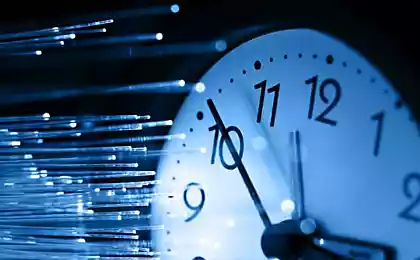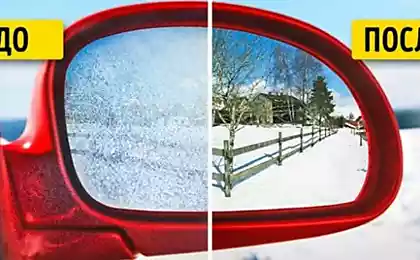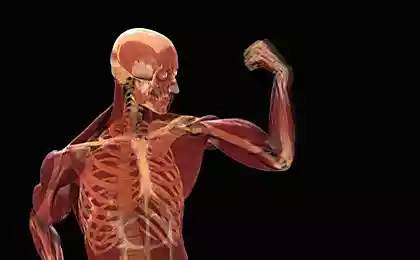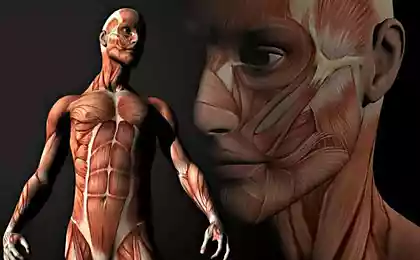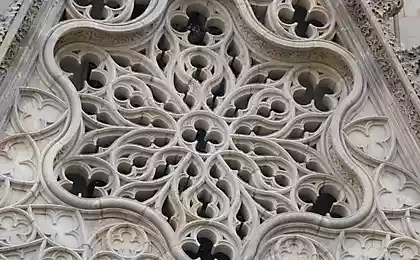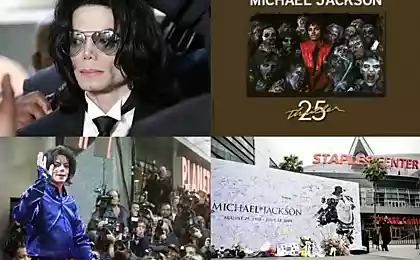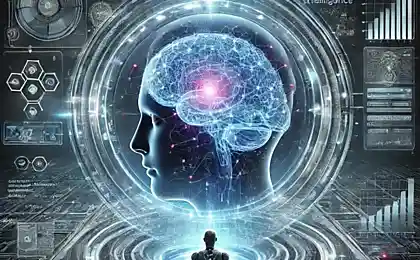970
10 facts about the crazy mirrors
Mirrors not only help us to bring myself up, but also serve for the benefit of science
All of us every day, we look in the mirror, but the mirror is not only designed to check how you look, or whether there is another vehicle behind you, when you're behind the wheel. Mirrors can be made quite crazy things - including, for example, to create and maintain a sufficiently stable wormhole to travel back in time. Mirrors and phantom limb can help us learn more about the brain, as well as with the help of mirrors can measure the distance to the moon. We invite you to read the Ten amazing facts about the mirrors.
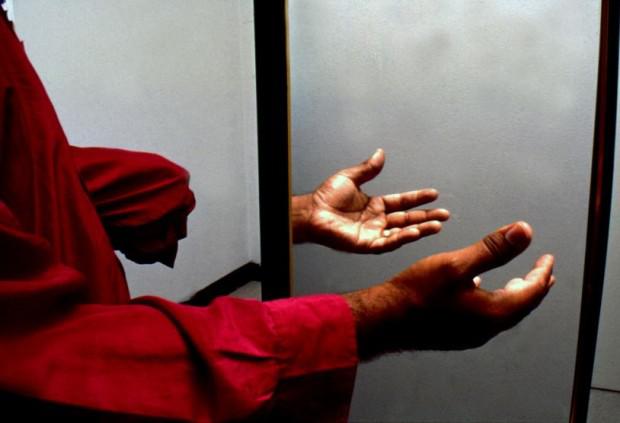
1. Mirrors and time travel
We have all heard that time travel is possible using wormholes, is not it? The only trouble is that wormholes are extremely unstable - they are quickly destroyed, so go through them very difficult.
However, a pair of mirrors can solve the problem. All that you need - two uncharged mirror (and fit metal plates) in a vacuum, placed at a distance of a few micrometers apart. Always make sure that between them there is no external electromagnetic field. Wink Casimir effect - the physical force generated due to the quantum field between the mirrors.
This quantum electrodynamic force creates a massive negative region of space-time between the mirrors, with the result that may appear stable wormhole, through which it is theoretically possible to travel at a speed faster than light.
Thus, according to the theory, you could take a trip into the past, but the future, unfortunately, remains inaccessible, so find out the winning numbers lottery tickets fail. There is another fly in the ointment in the ointment - such stable wormholes are infinitesimal, so get acquainted with his great-grandmother, too, is difficult.
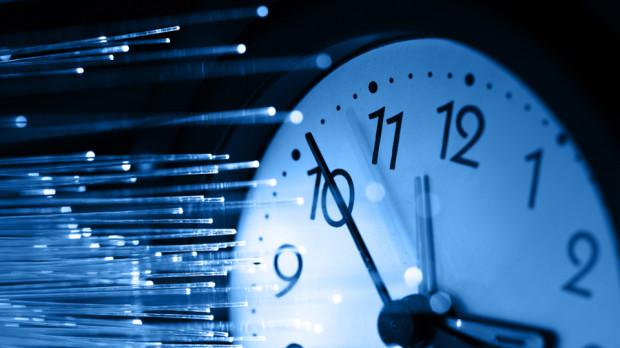
2. Mirrors, phantom limbs and the human brain
Experiments using mirrors in patients with phantom limbs allowed researchers to learn a lot about how the brain works. The researchers placed a mirror on the table vertically, and between them reflects the entire patient's limb - say, hand.
Reflection intact hand superimposed on the side of the phantom limb, so that the patient in this case it seems that he sees both hands - and a whole, and missing.
It sounds scary, but when a person sees both hands, he feels his phantom arm moves, even if he lost it ten years ago or more. When his whole hand touch, it feels to the touch and the phantom hand. After several repetitions of the procedure, patients feel that their phantom limb disappeared.
Scientists believe that the effect is due to brain plasticity - how the brain creates new neural pathways after losing a limb. Also, scientists believe that between sight and touch in the brain there is a very close relationship.
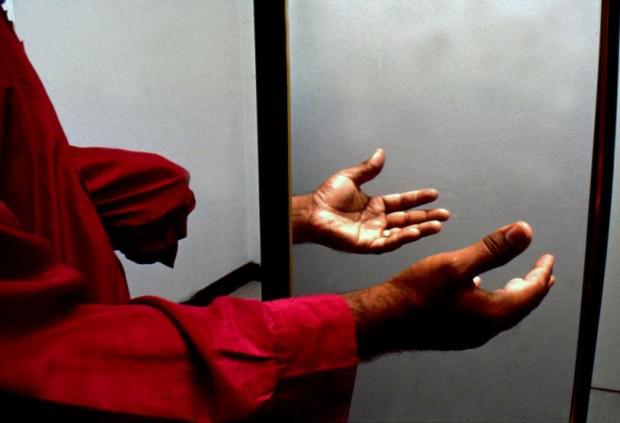
3. Mirrors cause hallucinations
When you look in the mirror, it may be a strange illusion. Try it yourself: sit in a dark room in front of the mirror about a meter away from him and look at his face for ten minutes. The room should be as dark as possible, so that in this case you clearly could see his reflection.
First, you will notice how your face in the mirror a little distorted. Gradually, reflection will change soon, will be more like a mask - there feeling that the face in the mirror is not yours. Some people see the face of strangers, fantastic monsters or animals muzzle.
Scientists believe that such an experiment could help us better understand ourselves. Some psychologists believe that the method is suitable for the treatment of schizophrenia - because patients are faced with their other "I".
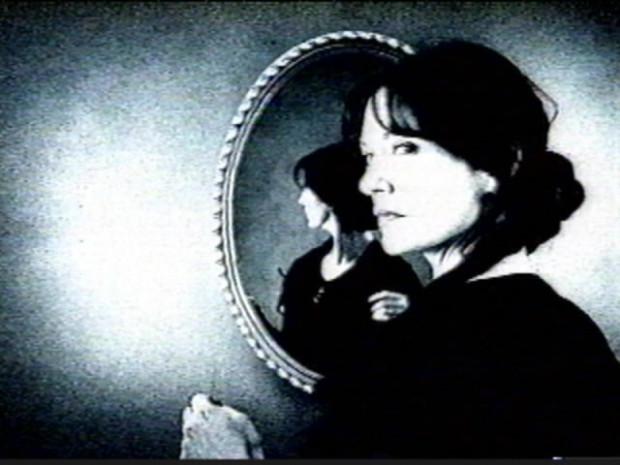
4. Do all recognize themselves in the mirror?
Recognize themselves in a mirror - naturally: at least, that's what most people will say, however, be tested for samoopoznanie in the mirror every able. Scientists put on the face or body of the test mark to determine whether a person recognizes himself in the mirror - if so, it will most likely try to erase the mark. Children, for example, begin to recognize themselves in a mirror at the age of only 24 months.
However, when the researchers tested the children from countries such as Kenya and Fiji, then we were surprised - six years old children to pass this test could not. But this is not a sign that they are not able to psychologically separate themselves from other people. Most likely, the problem is cultural differences: children usually died away before his own reflection - it proves that they understood what they see is themselves, not someone else.
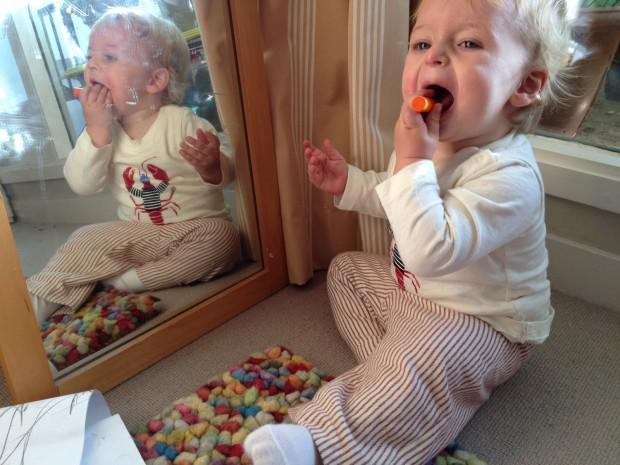
5. The animals that can recognize themselves in a mirror
So many people on the mirror test samoopoznanie not pass. The same applies to most animals - but not all. Could this mean that some animals are able to recognize his own reflection? Scientists believe that, yes.
For example, elephants, being in front of a mirror, erase a mark on his head did not, but it made known the obvious signs samoopoznaniya - performed a series of repetitive movements. Perhaps some animals is simply not concerned with the existence of extraneous markings on their body, therefore, they do not respond to them.
Gorillas test marks also are not like people. However, gorillas easy to confuse: eye contact gorilla society is extremely important, so that after they looked in the mirror, they are usually trying to retire and even then erase the marks that previously seen in the mirror. So now it is believed that gorillas are able to recognize themselves in the mirror.
Perhaps the fact that the test with the markings is not effective for many types of animals, so many species, perhaps, have a much more developed self-awareness than we think. The mirror test is also able to pass the chimpanzee, orangutans, bonobos, dolphins, killer whales, and the European magpie.
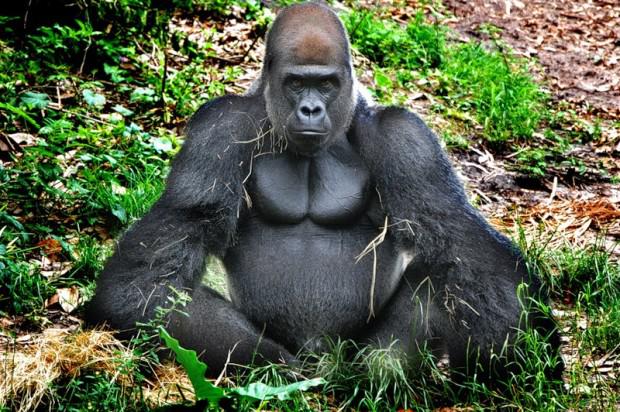
6. Mirrors on the Moon
The distance from us to the Moon is about 384,403 km, and we were able to get to know him through mirrors. The distance from the Earth to the Moon is constantly changing due to the fact that the moon revolves around the planet in an elliptical orbit. Distance from the nearest point of the orbit of the Moon to the Earth, known as perigee - just 363,104 km and apogee, the farthest point, this distance is 406,696 km.
Astronauts program "Apollo" installed on the moon roof reflector, which was used to calculate the distance from the Earth to the Moon. Corner reflector - a special type of mirror that reflect laser light back in the direction from which he came. These laser beams are directed to the moon using huge telescopes on Earth, and reflected light allows scientists to calculate the distance to the moon with an accuracy of three centimeters.
Corner reflectors have also increased our knowledge of the Moon. For example, they provide information about the lunar orbit, and now we know that every year, the satellite is moving away from Earth by about 3 to 8 cm. These data have even been used to test Einstein's theory of relativity.

7. Mirrors can reflect sound
Mirror reflecting sound waves, known as acoustic mirror. They were used in the United Kingdom during the Second World War for the detection of specific sound waves coming from enemy aircraft. This was before the advent of the radar.
Such mirrors are built around the coast of Britain, the most famous of them are still standing in Dengue, Kent. Just because you can not approach them, access is limited - see the mirror can only be on a special tour.
The only thing in the world of acoustic mirror outside the United Kingdom is located in Maktab, Malta. This is one of the largest of these mirrors in the world - its diameter is approximately 61-meters. In the local dialect the mirror is also called «Il widna», which means "ear". Location of the "ear" is not a secret, but access to it is closed.
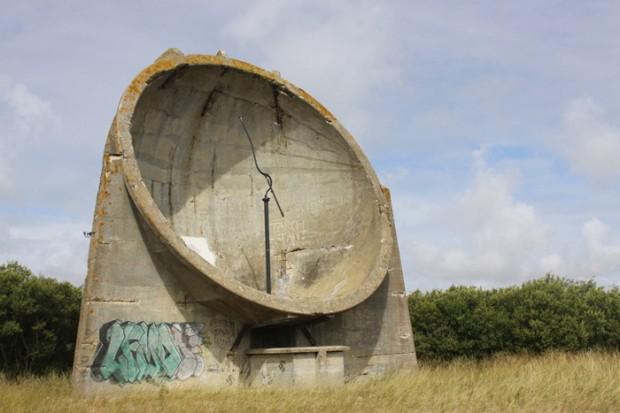
8. Mirrors reflect matter
Surprisingly, there are mirrors that can reflect the cloth - in physics, they are known as the atomic mirror. The atomic mirror reflects the atoms of matter in the same way as an ordinary mirror reflects light. To reflect the neutral atoms are used electromagnetic fields, although some mirrors used ordinary silicon water.
Reflection on the atomic mirror - it is essentially a quantum reflection of de Broglie waves. It works to reflect the neutral atoms that move slowly such atoms generally are repelled from the surface of the mirror. The property can be used to capture the slow atoms or focusing of an atomic beam. It is better to work through the mirror ribbed atomic larger than the wavelength of substance compared to the minute photons of light.
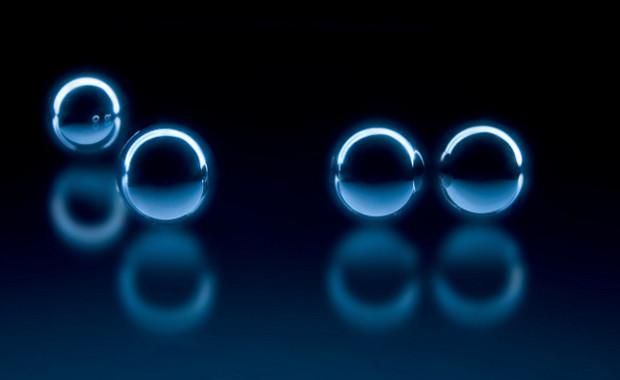
9. True mirror
What the mirror shows your face "inverted" - a myth: your reflection is not inverted, what you see - it is the left side of your face from the mirror to the left and right side of the right; and therefore it creates the illusion that your image was rotated.
However, there are so-called irreversible, or truthful mirror - it allows a person to see himself in the mirror, just as it is seen by others. The first such mirrors are used for applying makeup.
Truthful Mirror is easy to create at home: just put two ordinary mirrors perpendicular to each other and look at its reflection on the union: a true mirror will give you a 3D-image that moves just like you, and not flat, as in an ordinary mirror .
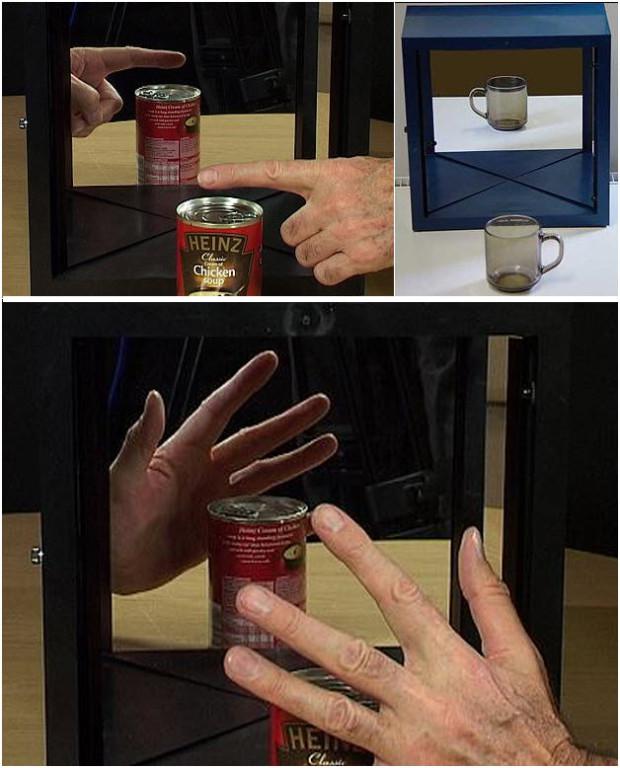
Source:
All of us every day, we look in the mirror, but the mirror is not only designed to check how you look, or whether there is another vehicle behind you, when you're behind the wheel. Mirrors can be made quite crazy things - including, for example, to create and maintain a sufficiently stable wormhole to travel back in time. Mirrors and phantom limb can help us learn more about the brain, as well as with the help of mirrors can measure the distance to the moon. We invite you to read the Ten amazing facts about the mirrors.

1. Mirrors and time travel
We have all heard that time travel is possible using wormholes, is not it? The only trouble is that wormholes are extremely unstable - they are quickly destroyed, so go through them very difficult.
However, a pair of mirrors can solve the problem. All that you need - two uncharged mirror (and fit metal plates) in a vacuum, placed at a distance of a few micrometers apart. Always make sure that between them there is no external electromagnetic field. Wink Casimir effect - the physical force generated due to the quantum field between the mirrors.
This quantum electrodynamic force creates a massive negative region of space-time between the mirrors, with the result that may appear stable wormhole, through which it is theoretically possible to travel at a speed faster than light.
Thus, according to the theory, you could take a trip into the past, but the future, unfortunately, remains inaccessible, so find out the winning numbers lottery tickets fail. There is another fly in the ointment in the ointment - such stable wormholes are infinitesimal, so get acquainted with his great-grandmother, too, is difficult.

2. Mirrors, phantom limbs and the human brain
Experiments using mirrors in patients with phantom limbs allowed researchers to learn a lot about how the brain works. The researchers placed a mirror on the table vertically, and between them reflects the entire patient's limb - say, hand.
Reflection intact hand superimposed on the side of the phantom limb, so that the patient in this case it seems that he sees both hands - and a whole, and missing.
It sounds scary, but when a person sees both hands, he feels his phantom arm moves, even if he lost it ten years ago or more. When his whole hand touch, it feels to the touch and the phantom hand. After several repetitions of the procedure, patients feel that their phantom limb disappeared.
Scientists believe that the effect is due to brain plasticity - how the brain creates new neural pathways after losing a limb. Also, scientists believe that between sight and touch in the brain there is a very close relationship.

3. Mirrors cause hallucinations
When you look in the mirror, it may be a strange illusion. Try it yourself: sit in a dark room in front of the mirror about a meter away from him and look at his face for ten minutes. The room should be as dark as possible, so that in this case you clearly could see his reflection.
First, you will notice how your face in the mirror a little distorted. Gradually, reflection will change soon, will be more like a mask - there feeling that the face in the mirror is not yours. Some people see the face of strangers, fantastic monsters or animals muzzle.
Scientists believe that such an experiment could help us better understand ourselves. Some psychologists believe that the method is suitable for the treatment of schizophrenia - because patients are faced with their other "I".

4. Do all recognize themselves in the mirror?
Recognize themselves in a mirror - naturally: at least, that's what most people will say, however, be tested for samoopoznanie in the mirror every able. Scientists put on the face or body of the test mark to determine whether a person recognizes himself in the mirror - if so, it will most likely try to erase the mark. Children, for example, begin to recognize themselves in a mirror at the age of only 24 months.
However, when the researchers tested the children from countries such as Kenya and Fiji, then we were surprised - six years old children to pass this test could not. But this is not a sign that they are not able to psychologically separate themselves from other people. Most likely, the problem is cultural differences: children usually died away before his own reflection - it proves that they understood what they see is themselves, not someone else.

5. The animals that can recognize themselves in a mirror
So many people on the mirror test samoopoznanie not pass. The same applies to most animals - but not all. Could this mean that some animals are able to recognize his own reflection? Scientists believe that, yes.
For example, elephants, being in front of a mirror, erase a mark on his head did not, but it made known the obvious signs samoopoznaniya - performed a series of repetitive movements. Perhaps some animals is simply not concerned with the existence of extraneous markings on their body, therefore, they do not respond to them.
Gorillas test marks also are not like people. However, gorillas easy to confuse: eye contact gorilla society is extremely important, so that after they looked in the mirror, they are usually trying to retire and even then erase the marks that previously seen in the mirror. So now it is believed that gorillas are able to recognize themselves in the mirror.
Perhaps the fact that the test with the markings is not effective for many types of animals, so many species, perhaps, have a much more developed self-awareness than we think. The mirror test is also able to pass the chimpanzee, orangutans, bonobos, dolphins, killer whales, and the European magpie.

6. Mirrors on the Moon
The distance from us to the Moon is about 384,403 km, and we were able to get to know him through mirrors. The distance from the Earth to the Moon is constantly changing due to the fact that the moon revolves around the planet in an elliptical orbit. Distance from the nearest point of the orbit of the Moon to the Earth, known as perigee - just 363,104 km and apogee, the farthest point, this distance is 406,696 km.
Astronauts program "Apollo" installed on the moon roof reflector, which was used to calculate the distance from the Earth to the Moon. Corner reflector - a special type of mirror that reflect laser light back in the direction from which he came. These laser beams are directed to the moon using huge telescopes on Earth, and reflected light allows scientists to calculate the distance to the moon with an accuracy of three centimeters.
Corner reflectors have also increased our knowledge of the Moon. For example, they provide information about the lunar orbit, and now we know that every year, the satellite is moving away from Earth by about 3 to 8 cm. These data have even been used to test Einstein's theory of relativity.

7. Mirrors can reflect sound
Mirror reflecting sound waves, known as acoustic mirror. They were used in the United Kingdom during the Second World War for the detection of specific sound waves coming from enemy aircraft. This was before the advent of the radar.
Such mirrors are built around the coast of Britain, the most famous of them are still standing in Dengue, Kent. Just because you can not approach them, access is limited - see the mirror can only be on a special tour.
The only thing in the world of acoustic mirror outside the United Kingdom is located in Maktab, Malta. This is one of the largest of these mirrors in the world - its diameter is approximately 61-meters. In the local dialect the mirror is also called «Il widna», which means "ear". Location of the "ear" is not a secret, but access to it is closed.

8. Mirrors reflect matter
Surprisingly, there are mirrors that can reflect the cloth - in physics, they are known as the atomic mirror. The atomic mirror reflects the atoms of matter in the same way as an ordinary mirror reflects light. To reflect the neutral atoms are used electromagnetic fields, although some mirrors used ordinary silicon water.
Reflection on the atomic mirror - it is essentially a quantum reflection of de Broglie waves. It works to reflect the neutral atoms that move slowly such atoms generally are repelled from the surface of the mirror. The property can be used to capture the slow atoms or focusing of an atomic beam. It is better to work through the mirror ribbed atomic larger than the wavelength of substance compared to the minute photons of light.

9. True mirror
What the mirror shows your face "inverted" - a myth: your reflection is not inverted, what you see - it is the left side of your face from the mirror to the left and right side of the right; and therefore it creates the illusion that your image was rotated.
However, there are so-called irreversible, or truthful mirror - it allows a person to see himself in the mirror, just as it is seen by others. The first such mirrors are used for applying makeup.
Truthful Mirror is easy to create at home: just put two ordinary mirrors perpendicular to each other and look at its reflection on the union: a true mirror will give you a 3D-image that moves just like you, and not flat, as in an ordinary mirror .

Source:
